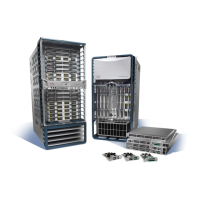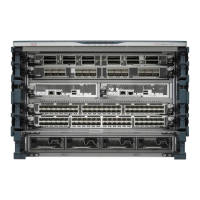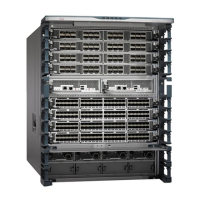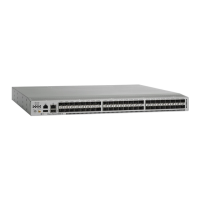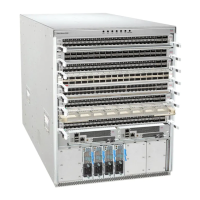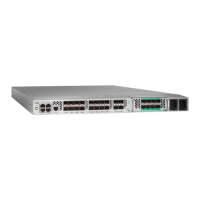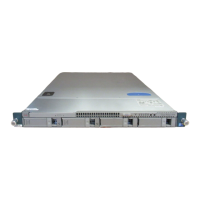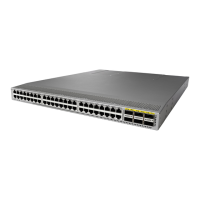6-18
Cisco Nexus 7000 Series Hardware Installation and Reference Guide
OL-23069-07
Chapter 6 Installing Power Supplies
Connecting a DC Power Supply to DC Power Sources
Note For all your power connections, use one color cable for positive circuits and the other color for
negative circuits.
Note The cable plugs are keyed to fit one way only in the power supply recepticles. If you cannot
insert a plug easily in the receptacle, turn it over and reinsert it. When fully inserted, fasten the
plugs to the power supply by tightening their two screws to 8 to 11 in-lb (0.9 to 1.2 N·m).
Step 5 For the powered down circuits connected to the power supplies, turn on the power at the circuit breaker.
The Input LEDs turn on as follows:
• For 3 kW of power, either Input 1 and Input 2 LEDs will turn green or the Input 3 and Input 4 LEDs
will turn green.
• For 6 kW of power, all four of the Input LEDs will turn green.
Step 6 Turn the power switch on the DC power supply from STBY to ON. The LEDs should flash and then the
Output LED should turn on in addition to the Input LEDs.
If the FAULT LED is lit or flashing, call Cisco TAC for assistance.
Connecting a Power Supply to DC Power Sources through a Power Interface
Unit
If the DC power supplies and the DC power sources are located too far apart for you to connect them
with the power cables that you attached to the DC power supplies, you must install a power interface unit
(PIU) to connect the power cables to cables that can reach to the DC power sources.
Depending on whether you require the combined power mode, power-supply redundancy, input-source
redundancy, or full redundancy, you connect the PIU to one or two power sources as follows:
• For combined power, connect each of the isolated inputs to the same DC power source as shown in
Figure 6-8.
• For the power-supply redundancy, connect N+1 power supplies to the same DC power source as
shown in Figure 6-9.
• For the input-source redundancy, connect the power cables as follows to the DC power source (see
Figure 6-10):
–
For 3-kW power supplies, connect the cables from half of the power supplies to one DC power
source and the other half to another DC power source.
–
For 6-kW power supplies, connect the cables from one of two plugs on a power supply to one
DC power source and the cables from the other plug to another DC power source.
• For the full redundancy, connect the power cables as follows to the DC power source for N+1 power
supplies (see Figure 6-11):
–
For 3-kW power supplies, connect the cables from half of the power supplies to one DC power
source and the other half to another DC power source.
–
For 6-kW power supplies, connect the cables from one of two plugs on a power supply to one
DC power source and the cables from the other plug to another DC power source.

